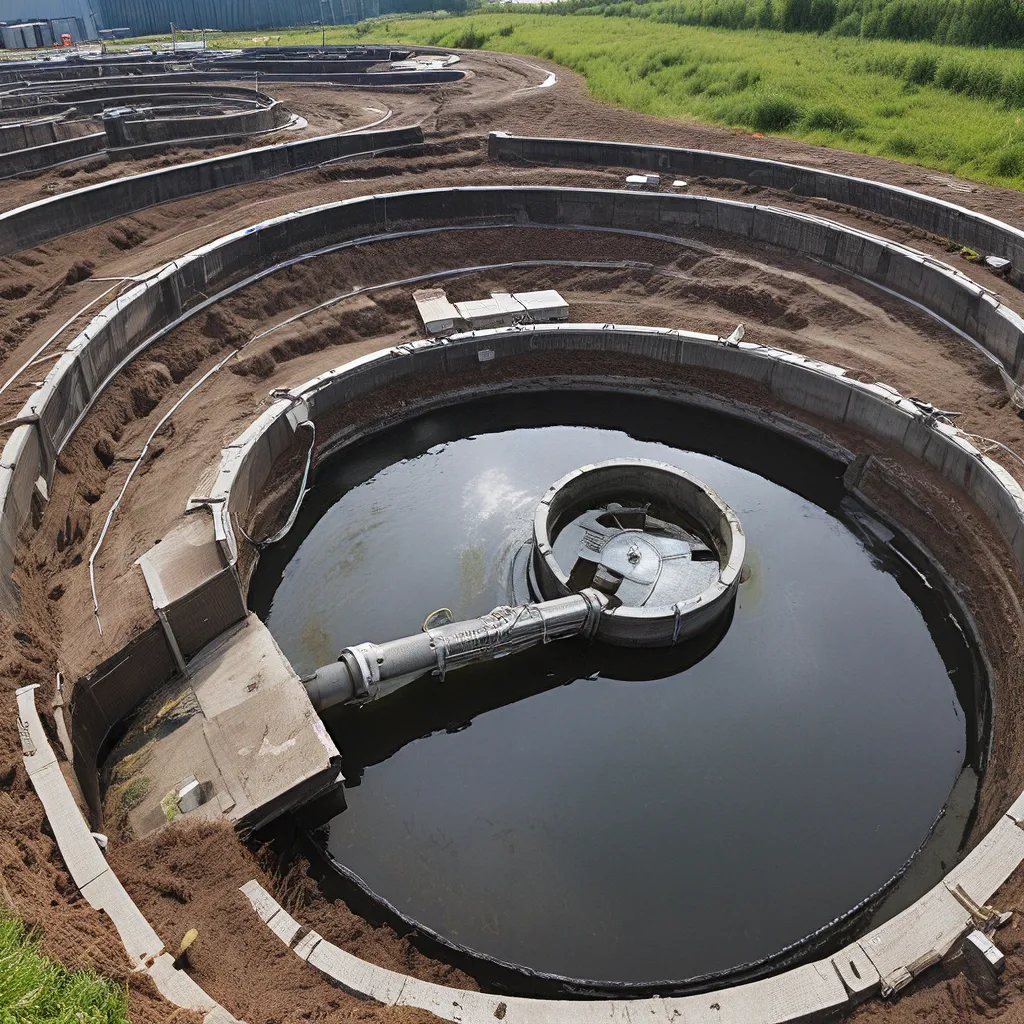
As I delve into the fascinating world of wastewater treatment, I can’t help but feel a sense of excitement. You see, I firmly believe that the future of sustainable waste management lies in the intersection of wastewater treatment and the circular bioeconomy. It’s a revolutionary concept that not only addresses our environmental challenges but also offers incredible economic opportunities.
The Circular Bioeconomy: A Holistic Approach
The circular economy is all about designing out waste and pollution, keeping products and materials in use, and regenerating natural systems. But what if we could take this one step further? Enter the circular bioeconomy – a game-changer that integrates the principles of the circular economy with the use of renewable, bio-based resources.
At the heart of the circular bioeconomy is the idea of transforming waste into valuable products. Gone are the days when wastewater was simply dumped or treated as a nuisance. Today, we have the technology and the know-how to extract the hidden treasure trove within. From bioplastics and biofuels to high-value biomaterials, the possibilities are endless.
Just imagine – what if we could convert the organic compounds in wastewater into biodegradable and compostable products? It’s not just a pipe dream; it’s a reality that’s already being put into practice. Companies are leading the charge, harnessing the power of green chemistry and innovative technologies to create a closed-loop system where waste is transformed into new, sustainable resources.
Sustainable Production Practices
One such example is the HICCUPS project, which efficiently captures CO2 emissions from wastewater treatment plants and converts them into high-performance bio-based plastics. Talk about a win-win situation! By reducing greenhouse gas emissions and creating valuable bio-based products, this project is a shining beacon of what’s possible.
But that’s just the tip of the iceberg. Across various industries, we’re witnessing a shift towards more sustainable production practices. Companies are embracing renewable energy sources, optimizing raw material use through precision agriculture and biorefining, and implementing closed-loop systems to minimize waste.
The BIOrescue project is another case in point. This innovative initiative addresses the challenge of spent mushroom substrate in Europe’s mushroom industry by transforming it into a range of biodegradable bio-based products. It’s a testament to the power of circular thinking, where one industry’s waste becomes another’s valuable resource.
Sustainable Consumption and Beyond
Of course, sustainable production is only half the battle. We also need to inspire and empower consumers to make more eco-conscious choices. Consumer awareness and education are crucial in driving the adoption of biobased and biodegradable products.
The BIOBRIDGES project is a prime example of how collaboration can bridge the gap between bio-based industries, brand owners, and consumers. By fostering these connections and advocating for supportive policies and regulations, BIOBRIDGES is helping to shape a future where sustainable consumption is the norm, not the exception.
But the journey doesn’t end there. Effective end-of-life management is essential for truly realizing the full potential of biobased and biodegradable products. Initiatives like the FINILOOP project are leading the charge, working with local partners to strengthen the plastic waste value chain, create safer job opportunities, and foster cleaner communities.
Navigating the Challenges
I’d be remiss if I didn’t acknowledge that the transition to a circular bioeconomy is not without its challenges. Upfront costs, scalability issues, and the need for infrastructure development can all pose hurdles. But I believe that with innovative solutions, strategic partnerships, and supportive policies, we can overcome these obstacles.
Alpha Wastewater, for example, is a company that has embraced the principles of the circular bioeconomy and is working tirelessly to help communities and industries unlock the value of their wastewater. By leveraging cutting-edge technologies and collaborative approaches, they’re driving sustainable change one project at a time.
The Future is Bright
As I reflect on the incredible advancements happening in the world of wastewater treatment and the circular bioeconomy, I can’t help but feel a sense of boundless optimism. We’re on the cusp of a revolution, where waste is no longer seen as a burden but as a valuable resource.
Through innovation, collaboration, and a steadfast commitment to sustainability, I believe we can create a future where the lines between waste and wealth are blurred. Where every drop of wastewater is a treasure trove waiting to be uncovered. Where the circular bioeconomy reigns supreme, and the health of our planet is the ultimate priority.
So, let’s continue to push the boundaries, explore new frontiers, and unlock the full value of waste. The future is ours to shape, and I for one can’t wait to see what’s in store.